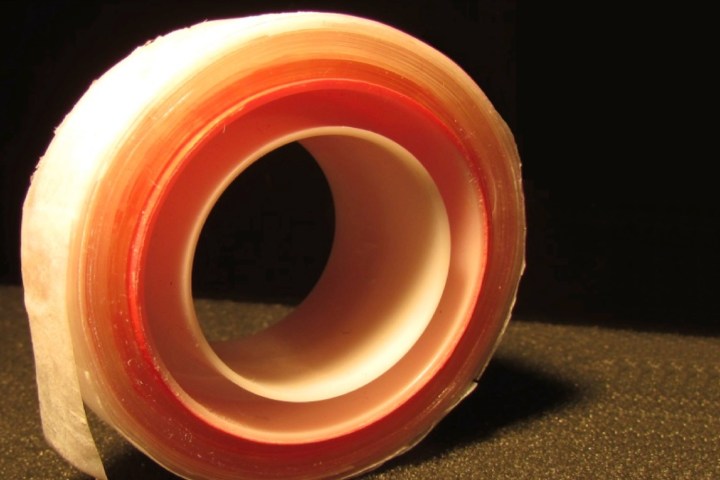
“A superomniphobic material is a material that is extremely repellent to virtually any liquid,” Arun Kota, assistant professor of mechanical engineering at Colorado State University, explained to Digital Trends. “That could be an acid or base, an organic liquid or an aqueous liquid, a food-grade liquid, a solvent, whatever you can think of. Whatever you choose, chances are that the surface can repel it. Think about the kind of Teflon nonstick frying pans we use at home, but multiplied by around one thousand times. That’s how nonstick we’re talking!”
Professor Kota has been investigating these kind of superomniphobic materials for around a decade. However, recently his Kota Lab at Colorado State made an important breakthrough in the form of a Scotch Tape-style adhesive which is able to act in this way.
“Up until now, the issue with superomniphobic surfaces is that the ways in which people made them required the use of harsh toxic chemicals, or fancy fabrication methods involving clean rooms,” Kota continued.
“These were things which required a lot of skill to make or a lot of expensive equipment. Where our research is different is that it takes the same surfaces, but turns it into a freestanding tape. Anyone wanting to impart a superomniphobic property to a surface can take our tape, cut it to any size they want, and stick it to that surface.”
Kota said that there are myriad applications. It could, for example, be used to produce self-cleaning materials, to aid with drag reduction, help with liquid waste minimization, and far more. “Anywhere you don’t want liquids to stick to a solid it could be extremely useful,” Kota said.
So when will this wonder tape be available on the market? Kota said that he would consider licensing the technology or even manufacturing it himself. There’s one problem that still needs to be overcome, however.
“The major obstacle that needs to be overcome before this can be commercialized is the mechanical durability,” he concluded. “Everyone working in this field right now is struggling with the same problem. To put it very simply, while this tape can repel liquid extremely well, if you take a piece of piece of sandpaper and cause an abrasion you will lose some of the functionality. The grand challenge now is to come up with a mechanically durable superomniphobic surface. That’s where our focus has to be.”
Editors' Recommendations
- You can now install any Android app on Windows 11 with a single click
- Can you offset your carbon footprint with a smartphone app? Klima thinks so
- Recognizing that you have a life, Snapchat unveils games you can play any time
- Think hybrids can’t be sporty? BMW’s Vision M Next is here to prove you wrong
- You can soon take your Amazon returns to any Kohl’s store across the U.S.


